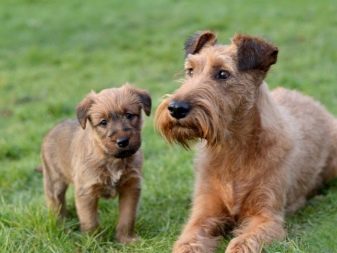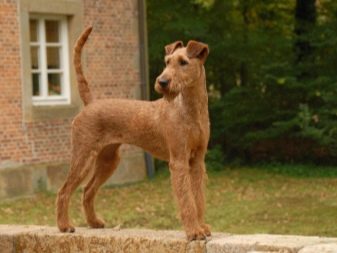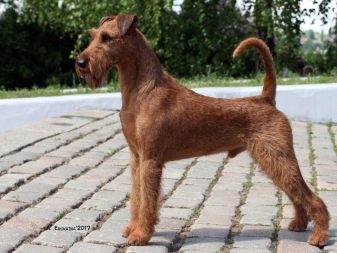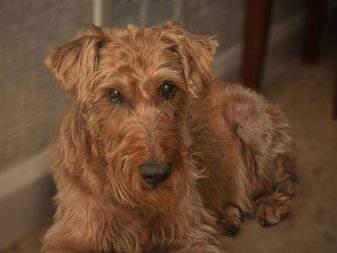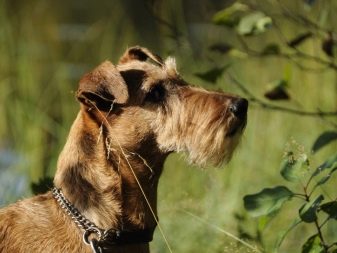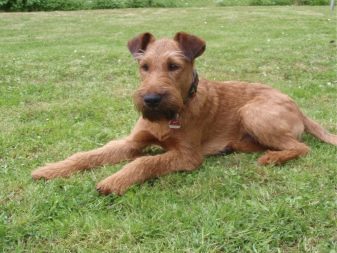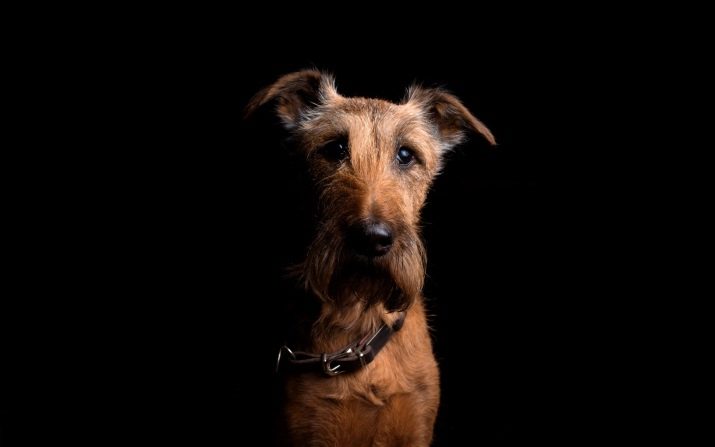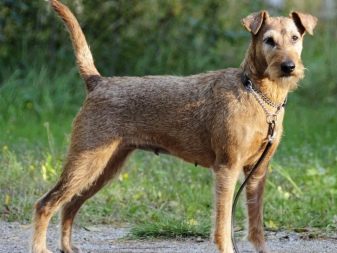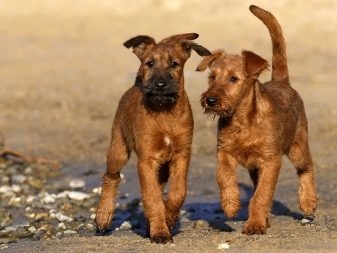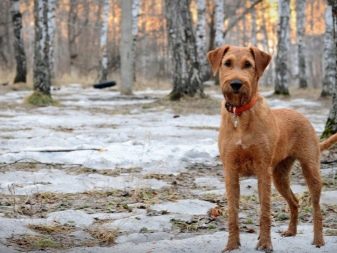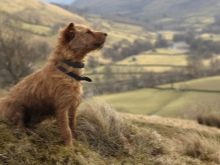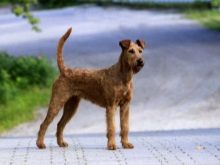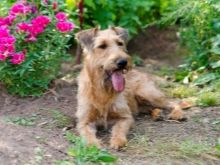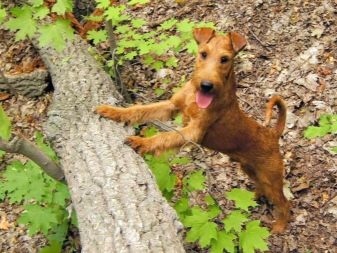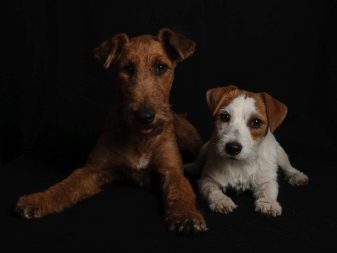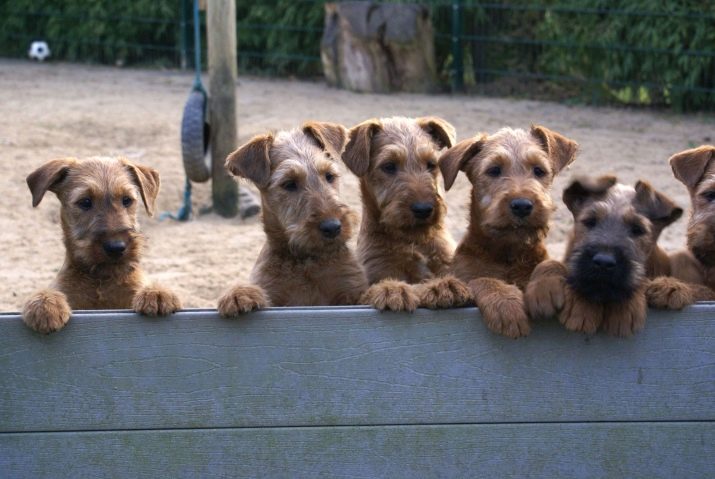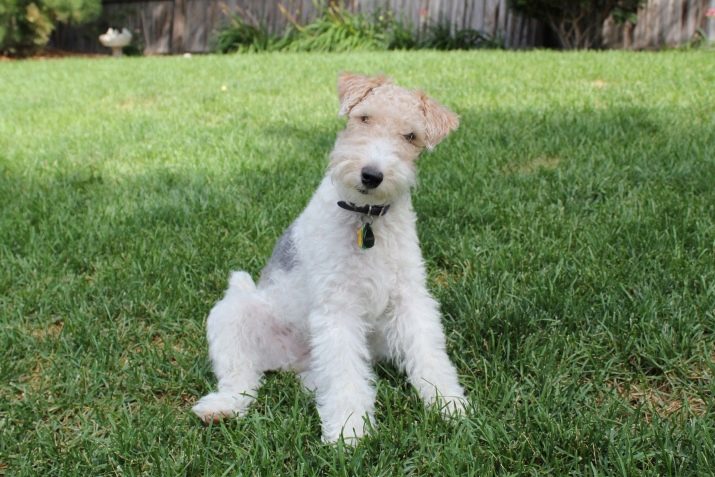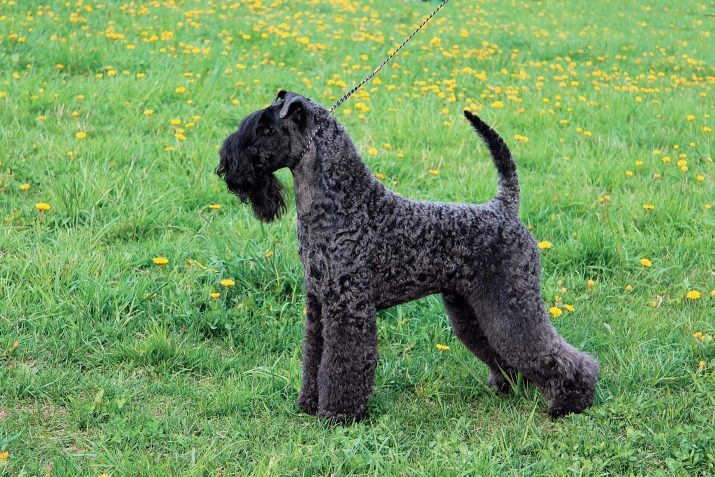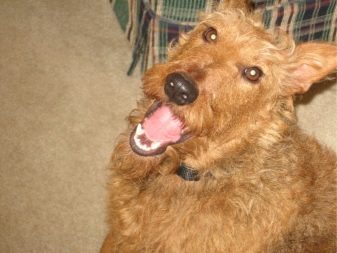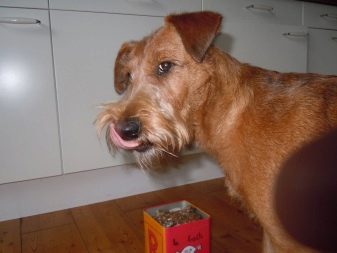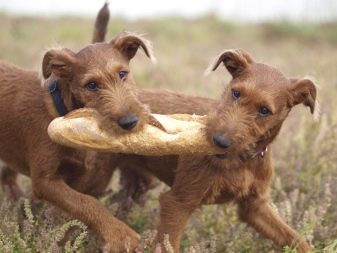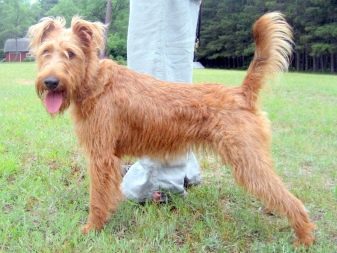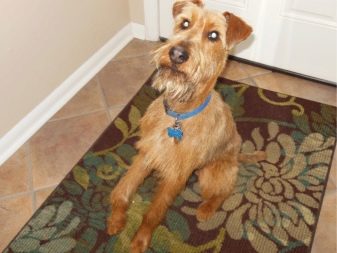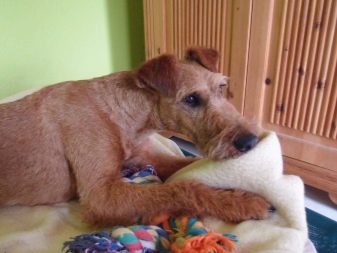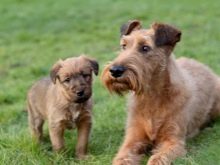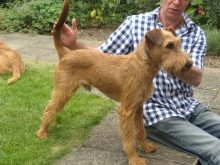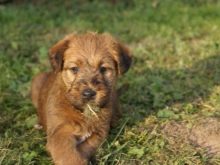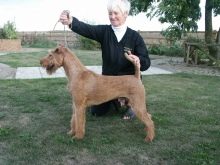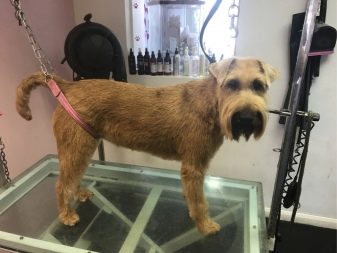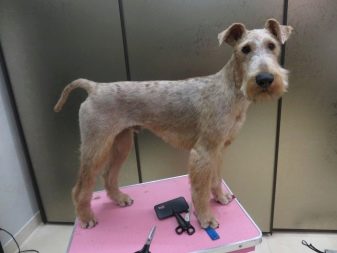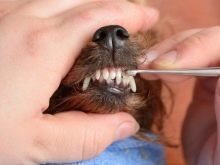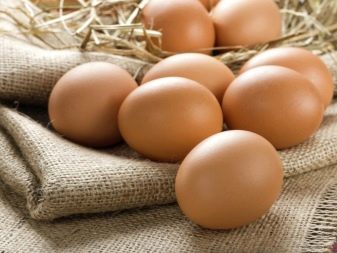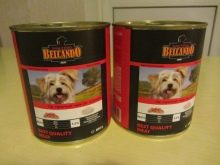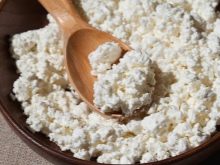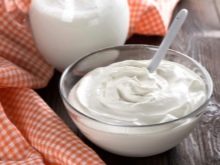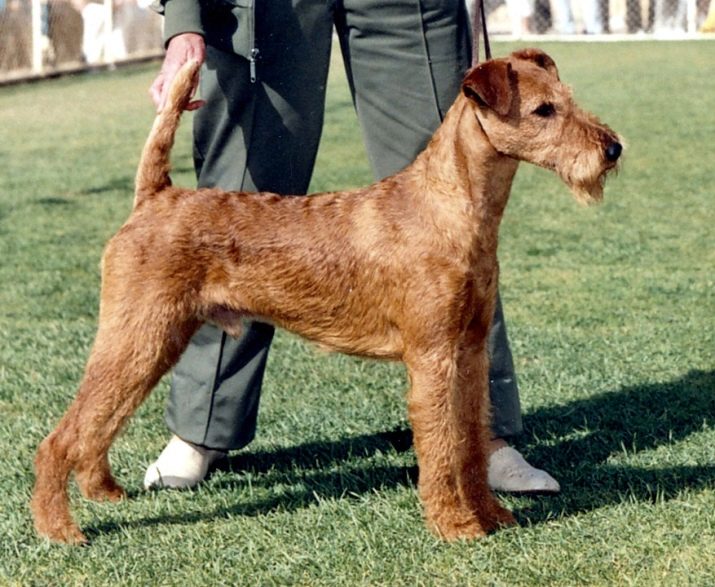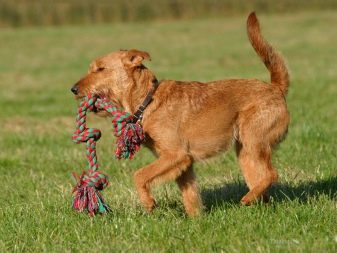The Irish Terrier is an amazing dog, behind the rustic appearance of which lies high intelligence, courage and unlimited devotion to its owner. For a great sense of humor, impulsive character and seething energy, which literally beats the key, it is often called the "red devil" or "sun dog."
History of origin
The Irish Terrier is considered the most ancient variety of terriers that appeared in Ireland. Unfortunately, the exact date and place of occurrence of this amazing breed could not be established, since ancient sources in the form of manuscripts give very vague information about this. It is only known that The first mentions of the representatives of this breed date back to the times of Saint Patrick, namely, to the year 432.
As for the ancestors of the Irish Terrier, nothing is known about them even though a couple of versions still exist. According to one of them, the progenitors of the dog are hard haired terrierswhich were brought from Britain and used as working hunting dogs. The second version says that the ancestor of the terrier is Irish Wolfhound.
However, modern genetic studies have shown that a closer relative of the “Irishman” is still a black-and-tan wire-haired terrier.
The story is also silent about the “author” of this remarkable breed, whose name is still not known to the general public. The first official mention of the "Irish" are already in 1875when they first appeared before the audience and jury members in the Scottish Glasgow, and a year later they were already shining on the rings of Brighton. After participating in two major exhibitions, interest in the new breed increased significantly, and in 1879 a breed club was established with headquarters in Dublin in Ireland. This contributed to the active development of the breed and made it very popular in a short time not only among hunters, but also among ordinary citizens.
However, the Irish terriers of that time were somewhat different from the modern representatives of the breed.
They had rather massive necks and voluminous snouts, and their bodies were not folded at all sporty. In addition, the standard of that time provided for the relief of not only the tail, but also the ears.
At the end of the XIX century. "Irish" were recognized by the English Kennel Club and equal rights with representatives of other breeds. However, the hidden potential of these intelligent and intelligent dogs was revealed not at exhibitions or hunting, but on the fronts of the First World War. Terriers were used as connected and sanitary dogs, and they also accurately found mines, which saved thousands of lives.. Unlike other service breeds, the “Irish” behaved very coolly at the front: they were not afraid of explosions and shots and did not run away from the battlefield.
However, a little later, from about the 20s of the XX century, the popularity of terriers began to decline.
And although the ups and downs occur from time to time with absolutely all breeds, the true connoisseurs of the Irish people are very concerned about the public's dying interest in the "red devils." To turn the tide and draw maximum attention to the breed, in 1933 Gordon Selfridge, the owner of a large shopping complex “Oxford Street”, came up with an effective marketing ploy. He conducted a large-scale presentation of the Irish Terrier breed, which thousands of people managed to watch.As expected, the interest in dogs increased significantly, the demand for puppies contributed to the expansion of the breeding base in nurseries, and the breed continued its development at an active pace.
Irish terriers were brought to the Soviet Union only after the end of World War II in the late 40s.
The first was brought bitch, to find a dog for which the Union failed, but because for mating had to use Kerry Blue Terrier and the Welsh Terrier. The cleanliness of the breed in the Soviet space was put at risk, which greatly upset European breeders and connoisseurs of the Irish Terrier. However, in the early 50s, thanks to the nursery that opened in the Polish People's Republic, the situation was successfully resolved. His specialists handed over to the Soviet colleagues a few purebred males, which were later joined by individuals from the German Democratic Republic.
But, despite the cleanliness of the blood, which was periodically updated at the expense of imported males, the “Irish” Soviet breeding was not quoted at the international exhibitions.
The situation changed only in 1997, when now the elite British manufacturers arrived in Russia. They were actively involved in breeding work, thanks to which the number of Irish terriers in our country began to acquire a more refined and close to European standards. The dogs began to receive admissions to international rings and looked at them quite well.
Currently, the breed is developing at a normal pace, gaining more and more fans around the world. Over time, the purpose of dogs has changed. If earlier they were used exclusively for hunting, where the fearless "Irishman" boldly took otters and badgers from the shelter, raised a flock of ducks into the air and tirelessly drove foxes, roes and deer, today the dog is often attracted to to the service of the police, where it helps to accurately find narcotic substances.
Breed description
According to the FCI standard number 139 of April 2, 2001, the Irish Terrier belongs to group 3 - “Terriers”, to section 1 - “Large and medium terriers” (without working tests) and is used as a universal rural dog, pet, guard a dog with high indifference to pain and danger, as well as a hunter and a doggie.
Externally, the “Irishman” is a medium-sized dog with a flexible, dry physique and a silhouette of an excellent sprinter.
The average height of adults is 42-46 cm, and weight varies from 11.4 kg in females to 12.5 kg in males. Consider the main characteristics of the representatives of the breed.
- The head of an animal has a flat skull, rather narrow between the ears and narrowing even more in the eye region. The transition between the forehead and the muzzle is very noticeable and is visible only in profile.
- The ears are small, V-shaped, set high and hang down on the temples. And the coat on them is always darker and shorter than on the body.
- The eyes are mostly dark in color, not too big and not bulging. Although sometimes there are individuals with yellow eyes.
- The nose, as well as thin dry lips, always has a black color.
- Jaws are very strong and have a slightly elongated structure. This allows the animal to have a reliable grip, which is quite important for a hunting dog.
- Strong and even teeth "Irish" are not subject to caries, with a tightly closed mouth, the upper incisors slightly overlap the lower ones.
- The neck is set high has an elongated structure, devoid of dewlap and evenly expands to the shoulders. On both sides there is a frill of wool that stretches down to the ears.
- The back is strong enough smoothly turning into a muscular, slightly raised lower back. Moreover, in bitches it may be somewhat longer than in males.
- Rib cage also quite muscular, but not large in size and width.
- The tail has a high landing, It is stopped up to 2/3 of the original length and has a hard woolen cover, devoid of suspensions and fringes. In countries that support the ban on the cupping of the ears and tails, only dogs with natural tails are allowed to keep and breed.
- The limbs of the "Irish" strong and muscular, they are distinguished by powerful hips and strong round legs. The fingers of the arched type end with black claws, and the pads on them are devoid of cracks and horny.
- Wool have "Irish" It has a wire-like structure and forms a fracture when it fits to the body. And the hairs are so close to each other that if you make a parting, the skin will not be visible. As for the length of the coat, it has its own on each part of the body: in the jaw area, on the sides of the neck and on the front legs it is longer, but without curls and curls, on the legs and body is of medium length, and on the head is very short, barely reaching 0.75 cm. A distinctive feature of the breed is the presence of a beard and mustache, which seem soft and silky, but in fact are just as tough as the rest of the coat.
- Color of Irish Terriers varies from copper-red to wheat, and yellow shades are also allowed by the standard, and yellow-red representatives of the breed are not uncommon. All other colors are considered serious deviations and are subject to disqualification. According to the standard, the color of Irish terriers should be uniform on all parts of the body with the exception of the ears: they are usually one or two tones darker, which makes the dog's appearance even more piquant. The presence of white tan on the chest is also allowed.
Considering the description of the breed, it is impossible not to mention the disqualifying faults.
These include behavioral abnormalities, such as excessive shyness or excessive aggressiveness overshot and undershot food, pigmentation of the nose of any color other than black, the presence of horny growths and cracked pads, as well as testicles not descended into the scrotum.
Kinds
The classification of the "Irish" is made only on one basis - the length and color of wool. According to this criterion, four types of dogs are distinguished.
- Irish Smooth-haired Terriers are active high-legged animals that have a strong muscular body and have a solid red or wheat color. Characteristic features of the species are very hard wool and the complete absence of chest spots. Dogs are very active and need increased physical exertion. From the positive qualities you can specify no sheddingthat allows you to keep such a dog in homes where there are allergies.
- Irish Soft Coated Wheaten Terriers - these are large and very harmoniously folded dogs up to 50 cm tall. Unlike the previous species, the wool of such animals is soft, silky and pleasant to the touch. It is slightly longer than the smooth-haired, slightly curled and evenly covers the body of the dog. A characteristic feature of the species are wool-covered eyes, because of what they are often watery and require increased attention from the owner.
Moreover, soft-haired pets need to be combed daily with the help of special scallops. Otherwise, soft hair quickly rolls into mats, which are almost impossible to comb.
The puppies of the soft-haired terrier are always born black and only in two years become wheat-colored. In comparison with other types of Irish terriers, such dogs are not aggressive and very obedient. They almost never give voices, do not bully on unfamiliar dogs, are very sociable, perfectly amenable to training and quickly remember the commands.
- Irish Wire Terriers are owners of golden-red hard wool, to the touch resembling a wire. It well protects the animal from heat and cold, creating an air layer inside.In addition, this cover does not allow water and repels dirt. Dogs practically do not fade and do not smell dog, however they need regular plucking and thinning of the wool - trimming.
Dogs very quickly get used to this procedure and do not feel any discomfort about it. Trimming significantly improves the condition of the skin and coat, so should be carried out fairly regularly. Unlike the wheat terriers, the wool of the hard-haired representatives of the breed is not prone to curvature and waviness.
- Irish Blue Terriers, unlike red-haired fellows, have a thick wavy wool of gray or steel color. The paws and ears of animals are often black, and the beard is much longer than that of red dogs. Blue terriers are distinguished by excellent protective and protective qualities and temperament of real fighters.
Character
Irish terriers have a rather impulsive temper and can be hot-tempered and aggressive with unfamiliar dogs. Due to emotional incontinence, the “Irish” have a firmly established reputation of troublemakers and brawlers who are not averse to developing relationships even at trade shows. However, this reaction does not apply to humans. Cynologists and breeders of the breed say that the nature of the terriers are very versatile and can harmoniously combine the features of an exemplary hard worker, a naughty clown and a reliable watchman.
In a word, the terrier’s nature consists entirely of contradictions.
A dog can be fierce, and in a minute - unusually affectionate, it can make people laugh with its tricks, and immediately get offended if they laugh at it, can love to swim, but can not tolerate walks in the rain.
Despite the contradictory nature Irish terriers finely sense the mood of the owner and have high intelligence. Dogs are well aware of intonation, they know the meaning of a large number of words, have an excellent memory and are perfectly oriented to the terrain. At the same time, young individuals are not a bit to gossip.by pulling a sausage off the table or turning the contents of the cabinet over Especially they have fun in the absence of the owners: the bitten legs of the chairs and the spoiled shoes are the invariable attributes of the maturation of these naughty and mobile dogs.
However, with age they calm down and do not cause property damage to their owners.
In an apartment in the presence of the owners, the dog behaves quite calmly, however, should the owner invite her to take a jog or bike ride - the “Irishman” becomes unrecognizable: the dog, by its nature, starts to cut circles, have fun and enjoy joint pastime and freedom. As for the attitude towards children, the dog responds with pleasure to outdoor games and fun, but only with those children with whom he grew up or just familiar with. He can even stand a randomly clamped paw or twitch the tail.
However, testing the patience of the “Irishman” is not worth it and it is better to immediately explain to the child that such a dog requires respectful attitude and will not tolerate bullying.
Lifespan
"Irish" are distinguished by good health and are practically not susceptible to genetic diseases. Due to not too much weight, dogs rarely suffer from such a common canine ailment as hip dysplasia, and do not have food allergies. Due to the high resistance of the terrier to all sorts of diseases, they are often compared with mongrels: dogs have a strong musculoskeletal system and good immunity. Among the pathologies encountered in the “Irish” are hypothyroidism, von Willebrand-Diana disease and hyperkeratosis.
The average life span of Irish Terriers is 13 years.
Maintenance and care
The best option for the content of "Irish" is considered a country house with a spacious plot. Prerequisite is the presence of the fence height not lower than 2 m. This requirement is due to the excellent jumping ability of the pet, which can easily overcome the one and a half meter fence.
However, the dog gets used to the apartment conditions rather quickly, the main thing is not to be lazy to walk with him for several hours a day. The only thing that should not be done under any circumstances is to put the “Irish” on a chain. Not being able to fully move and being in a limited space, the dog will become very angry and become uncontrollable.
As for the care of the pet, it is completely uncomplicated.
The dog is trimmed fairly regularly, and soft-haired individuals must be combed daily. For trimming it is better to turn to the groomer, and not to tweak yourself. In contrast, a haircut is a rather complicated and specific process, which even an experienced master takes 5-6 hours to complete. If it is decided to perform the tweaking independently, then it is better to resort to the help of a trimming scheme, which clearly shows the sequence of the procedure and the rules of plucking the hair on certain areas of the body.
The first time pets trimming in 2.5 months, with the legs, mustache and beard do not touch, but only slightly dub scissors.
Hair that grows in the ear canals, necessarily pull out, thereby ensuring air circulation. The trimming procedure is repeated every 6 months, and in show dogs - every 1.5-2. Before the pinch, the wool is washed, combed well and eliminated tangles.
Bathe the "Irish» as needed, a special shampoo for wire-haired dogs. Eyes and ears are inspected daily, removing the selection with a wet swab. The claws are clipped with a clipper at least once every 1.5 months, and the teeth are cleaned weekly, using toothpaste for dogs and a brush on the finger.
Feeding
When drafting a diet for the Irish Terrier, you should know that 70% of the total amount of food should be foods rich in protein. Feed an adult dog should be 2 times a day, and in the morning, the portion should be a little more than the second. Up to 3 months puppies are fed 5-6 times a day, babies 4-6 months - 3-4 times a day, from 7 months of age, terriers are transferred to 2-time feeding.
With a natural diet, half a serving should be low-fat meat or by-products, and the rest should fall on porridge (buckwheat, rice or barley) and vegetables, flavored with a spoonful of vegetable oil.
A couple of times a week "Irish" need to give eggs and sea lean fish, pre-cooked and cleaned of bones.
Fermented milk products to terriers You can make cottage cheese and sour cream with a low percentage of fat. As an additive to natural nutrition should be used bone meal, fish oil and vitamin-mineral preparations.
If it is decided to feed the “Irish” with industrial food, then any premium class composition will fit, in which all the substances necessary for the dog's body are in the right quantity and permissible combinations.
With any type of food pet must have round the clock access to fresh drinking water.
Upbringing and training
The “Irish” have impressive training abilities, however, not everyone is suitable as the first dog. This is because the standard classes for them are not suitable: These dogs will train only if they are very interested in this process and want to do it themselves. Therefore, the education of terriers should be carried out in a game form and rely on the pet's natural curiosity.
The main thing in this business is not to flirt and not to turn relations with a dog into familiarity. Terriers tend to lead and will not mind to fight for it with the owner.
The best option would be to entrust the training of the “Irishman” to a professional who, taking into account the future mission of the dog, will select the desired program.
Terriers show excellent results not only for early, but also for search and rescue and protective and guard courses. In addition, with the “Irish” you can do kursing, skijoring, dog frisbee and agility, as well as train them on the blood trail and teach them to fish from the pond and to assort the damaged bird.
However, no matter what type of activity a dog learns, it is better that the lessons are individual. In group workouts, the Irish often do not show any results at all, whereas with a personal approach they catch everything pretty quickly.
Owner reviews
In general, the owners of Irish terriers speak very well about the breed. However, many of them point out some problems in the education of teenage dogs, which consist in the pet's desire to establish leadership over the owner. Looking at the owner’s eyes, puppies begin to do forbidden things, and no slapping or shouting at all helps. By 7-8 months, or even by the year, most of them calm down and establish warm, trusting relations with the owner. Mentioned in the reviews and about the "spacing of apartments", which are arranged by pets in anticipation of the owners: they gnaw on shoes, spoil the furniture legs and gnaw the wallpaper.
Some puppies, often boys, do not go to the toilet for a long time on the street and up to 7 months defecate at home.
Many owners blame the fact that a dog on a walk behaves like a vacuum cleaner, picking up everything edible and inedible on its way. However, by the year this habit disappears and no longer bother the owners. Of the positive qualities, a sharp wit, intelligence and the ability of the pet to adapt to the mood of the owner are noted. It also speaks of the guard-guard qualities and the boundless loyalty of the Irishman.
On the Irish Terrier, see below.

